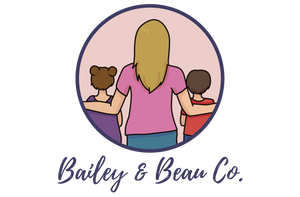Have you ever had your niece or nephew excitedly tell you a story, only to realize later that you weren’t fully listening? Maybe you were thinking about what to say next, checking your phone, or distracted by the million other things on your mind. We’ve all been there! But here’s the thing—the way you listen to a child shapes how they see themselves and the world.
Active listening isn’t just about hearing words—it’s about showing that their thoughts, feelings, and ideas truly matter. And when you get it right, you’re not just listening; you’re building trust, confidence, and a lifelong connection. So, let’s dive into what active listening is and how it can help you strengthen your bond with the little ones in your life!
What is Active Listening?
Active listening is more than just nodding along—it’s a skill that helps kids feel valued and understood. It means giving them your full attention, showing engagement through body language, and responding in a way that encourages them to keep sharing. The goal? To understand before responding, rather than waiting for your turn to speak.
For younger kids, this can mean having a calm body and making eye contact while they speak. For older kids, it’s also about pushing away distractions and being fully present in the moment.
How Can You Be an Active Listener?
A simple way to remember active listening is with the Ears, Brain, Action method:
👂 Ears – Listen carefully to the words they are saying. Avoid thinking about your response while they are speaking. 🧠 Brain – Process what they are saying. Think about their emotions, the meaning behind their words, and what they might need from you. 🎬 Action – Show them you’re listening! Use body language, ask follow-up questions, and respond in a way that encourages them to share more.
Here are some simple but powerful ways to actively listen and make your niece or nephew feel heard:
👀 Give Them Your Full Attention – Put away distractions and make eye contact. Show them they have your undivided focus.
🤫 Pause Before Responding – Avoid interrupting. Let them finish their thoughts before jumping in.
🤗 Use Non-Verbal Cues – Nodding, smiling, and leaning in shows you’re engaged in their story.
❓ Ask Thoughtful Questions – Instead of just saying, “That’s cool!”, try “Wow, what happened next?” to keep them talking.
💭 Stay Present – Try not to think about what you’ll say next. Just listen and soak in their words.
Why Does This Matter?
When you actively listen, you do more than just hear words—you validate their experiences and emotions. And guess what? That small act can have a huge impact! Kids who feel heard develop stronger communication skills, greater self-confidence, and deeper trust with the adults in their lives.
Think about it—when you were little, who really made you feel heard? Chances are, that person still holds a special place in your heart. Now, you have the chance to be that person for your niece or nephew!
Try This Fun Activity! (Ages 4+)
Ears, Brains, Actions
Test your niece or nephew's active-listening skills using simple sound-based instructions instead of words. This will require them to really tune into the sound and tune out distractions!
Age Range: 4+
Skills: Active listening, following directions
Materials: Paper and marker (optional)
Number of Participants: 1+
Where to Play: Inside or outside
Before You Start
⭐ Set your movement directions—meaning, what each sound will represent. Decide on these as a group or set them as the adult leader. Practice the movements a few times before starting.
⭐ Talk about how this game will require active listening. Players will have to really listen closely to the sound direction to know what to do.
How to Play
✅ Players will stand in front of you.
✅ You will give movement directions using sounds such as claps, snaps, or stomps. For example:
-
One clap = hop once
-
Two claps = four overhead claps
-
Three claps = jog in place
✅ Players will need to watch/listen to the sound direction so they know what action to do. If needed, write down what each direction means for reference.
✅ To make the game more competitive, players who do the wrong action can sit for the remainder of the activity. See who is the last one standing!
Thinking Back and Looking Ahead
🔹 What strategies did you use to help yourself really tune into the sound direction?
🔹 What’s another situation when you might need to use this strategy?
This activity is perfect for kids ages 4 and up. Not only does it help them feel heard, but it also teaches listening, following directions, and focus skills—plus, it’s a fun way to connect!
Final Thoughts
The strongest relationships are built in the small, everyday moments. Whether your niece or nephew is telling you about their day, their latest adventure, or a wild imaginary story, how you listen shapes the way they see themselves and their place in the world.
So, the next time they start talking, remember—it’s not just a conversation. It’s a chance to show them they matter. 💛
What’s the best story your niece or nephew has ever told you? Drop it in the comments below—we’d love to hear! 👇
#BaileyAndBeauCo #BuildingBonds #AuntUncleLife #ActiveListening #KidsWhoFeelHeard

